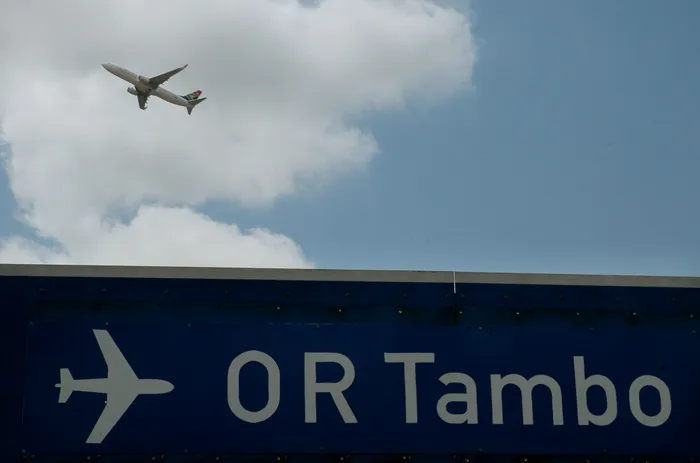SACAA under fire as aviation industry claims regulation withdrawal could ground 1 400 aircraft
AVIATION

The aviation regulator over the weekend insisted that the withdrawal of the notice, which did not affect commercial airlines, had been implemented after sufficient notice given two extensions since December 2023 that made the longest allowed time for an exemption from applicable regulations.
Image: Mujahid Safodien/AP
Banele Ginidza
The South African Civil Aviation Authority (SACAA) has found itself at the centre of controversy after the recent withdrawal of Aeronautical Information Circular (AIC) 18.19, which regulates engine overhauls for aircraft across the private flying sector, light commercial operations, aerial work, and flight training.
This controversial decision raises concerns about potential paralysis in the aviation industry, with operators warning that it could ground up to 1 400 aircraft and threaten an astounding 300 000 jobs nationwide.
The aviation regulator over the weekend insisted that the withdrawal of the notice, which did not affect commercial airlines, had been implemented after sufficient notice given two extensions since December 2023 that made the longest allowed time for an exemption from applicable regulations.
The aviation industry's bone of contention is that there was no empirical evidence to support the SACAA's position that piston engines have to be overhauled every 12 years instead of doing so based on the number of hours flown and the condition of the engine.
Operators have said they maintained aircraft and engines as required to be inspected at least every 100 hours of operation.
"SACAA is a regulator, not a manufacturer and as such cannot determine mandatory maintenance intervals for aircraft parts," said SACAA CEO, Poppy Khoza.
"The allegations that 1 400 aircraft and 300 000 jobs have been impacted by the withdrawal of this AIC remain untested. The SACAA believes this assertion is without merit and is unsupported by credible evidence."
Khoza said the door for engagement was not closed, hence SACAA had taken steps to engage the Original Equipment Manufacturers to pronounce themselves on this matter without ambiguity as the manufacturers of these products.
"The SACAA is aware that the aircraft in question are sometimes used for over border operations, and this heightens the risk as they enter the sphere of international operations," she said.
In 2023, the SACAA in 2023 rolled out a project to review all AICs that were issued by the civil aviation regulator in the past in a bid to ensure that they were adequately aligned with the existing regulatory dispensation.
During the review, it was found that the current provisions in the technical standards somewhat usurped the responsibilities of engine manufacturers by making the 12-year engine overhaul requirement compulsory and, also by including in detail the maintenance methods and techniques, a determination which is the responsibility of manufacturers and not regulators.
Khoza said as part of this process, the SACAA identified that AIC 18.19 was not aligned with the Civil Aviation Regulations 2011 (CARs) as it was last issued by the SACAA in 2006.
This exempted aircraft owners and operators from complying with the 1997 CARs on the overhauling of engines in line with the manufacturers’ manual.
Khoza said this was immediately identified as a safety risk as well as a legal and liability risk by the regulator.
"Not only was the AIC used incorrectly in this case, but it was also linked to regulations that had been repealed over the years. Given these inconsistencies and irregularities, it became necessary for the regulator to withdraw the AIC," Khoza said.
She said AICs were supplementary communication tools used by regulators to communicate specific aviation related information to the industry, and they were not meant to exempt industry from applicable regulatory provisions.
Khoza said as a standard rule, the airworthiness and maintenance of aircraft is covered in sufficient detail in a manufacturer’s manual.
As the manufacturer of the equipment or product, the manufacturers are expected to ensure that their products are not just supported with adequate parts but that they advise users of any safety risks that may become apparent during the use of such products on an ongoing basis."
"The regulator’s mandate is quite distinct from that of manufacturers, and it is to ensure that aircraft owners and operators maintain their aircraft in compliance with the manufacturer’s maintenance manuals," Khoza said.
"In instances where non-compliance is identified, the regulator takes appropriate actions including enforcement action to ensure that industry adheres to applicable legal provisions."
BUSINESS REPORT